13 Reasons The Ferrari Testarossa Stands Out From The Crowd

The Ferrari Testarossa doesn’t just turn heads, it spins them like a record on full blast. With its wide stance, side strakes, and flat-twelve growl, it became an instant icon of excess and attitude.
Born in an era of big hair and bold design, it managed to outshine just about everything else on the road. It wasn’t just fast, it was unapologetically loud in every sense.
Few cars scream personality quite like the Testarossa, and even fewer make it look so effortless.
1. Those Unmistakable Side Strakes
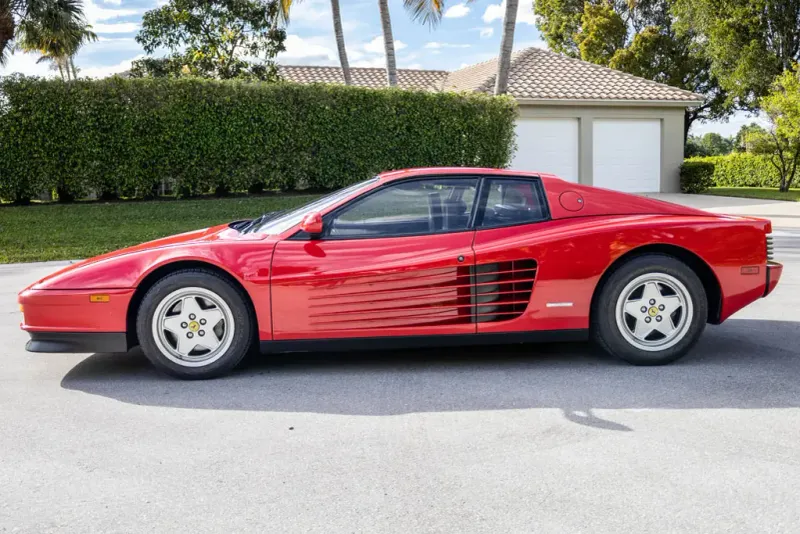
Nothing screams ’80s supercar louder than the Testarossa’s massive side strakes.
These dramatic air intakes weren’t just for show—they channeled cool air to the rear-mounted radiators while creating the most recognizable profile in automotive history.
Car designers have tried copying this signature element for decades, but nothing comes close to the original.
When you see those horizontal slats cutting across a car’s flanks, you know exactly what you’re looking at, even from a block away.
2. Booty That Won’t Quit
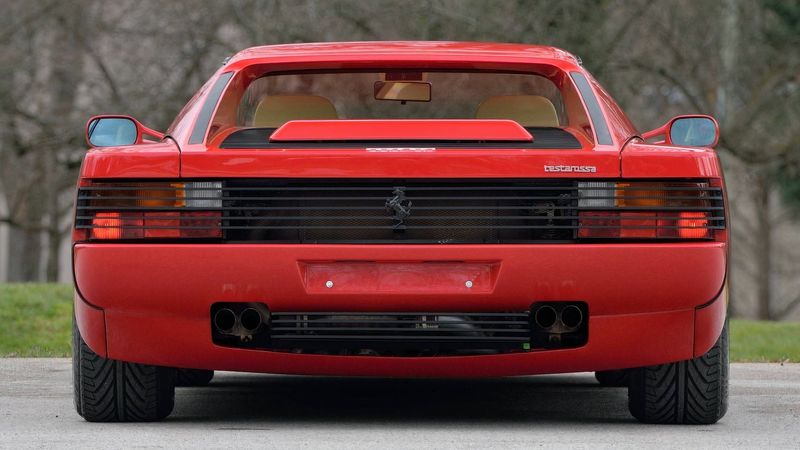
Measuring a whopping 78.7 inches across the rear wheels, the Testarossa flaunted the widest rear track of any production car when it debuted.
This extraordinary width wasn’t just about looks—it provided incredible stability at high speeds. Engineers needed that extra real estate to accommodate the flat-12 engine and cooling system. The result?
A posterior view that dominated the road and created an unforgettable silhouette that car enthusiasts still drool over nearly four decades later.
3. Heart of a Champion: The Flat-12 Engine
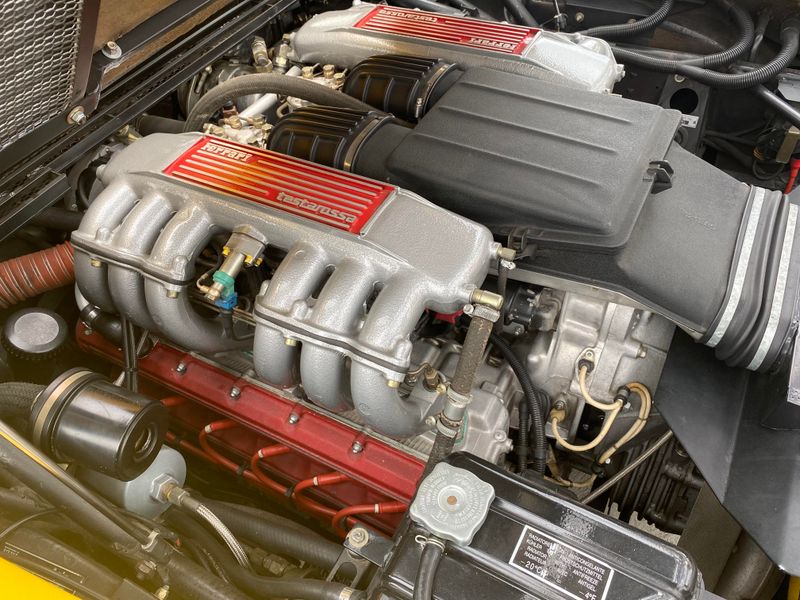
Under the louvered engine cover lurks automotive royalty—a 4.9-liter flat-12 masterpiece producing 390 horsepower.
Unlike typical V12s, this horizontally-opposed design kept the center of gravity low, improving the car’s handling dramatically.
The engine’s distinctive boxer layout created a soundtrack unlike anything else on the road.
When revved to its 6,800 rpm redline, it produced a mechanical symphony that made V8s sound positively pedestrian. Fun fact: each cylinder displaced exactly 380cc—about the size of a small motorcycle engine!
4. Perfect Balance: Mid-Engine Layout
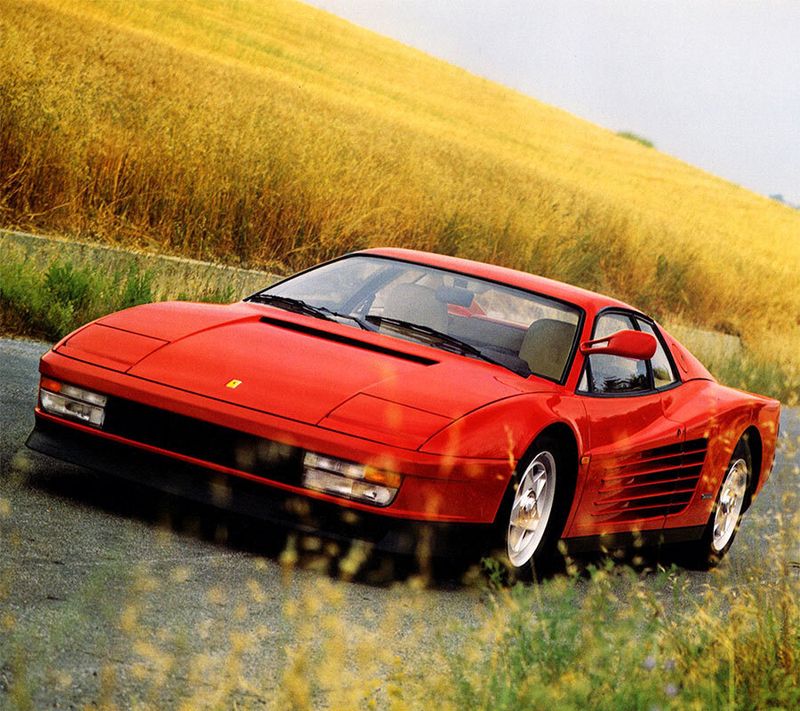
Tucking that glorious flat-12 behind the driver but ahead of the rear axle created the perfect weight distribution for cornering prowess.
This mid-engine configuration gave the Testarossa handling characteristics that belied its substantial size and weight.
Racing-inspired balance meant drivers could push this beast through corners with confidence few supercars of the era could match.
Despite weighing over 3,600 pounds, the Testarossa danced through curves with the agility of a prima ballerina wearing racing slicks.
5. Now You See Me: Pop-up Headlights
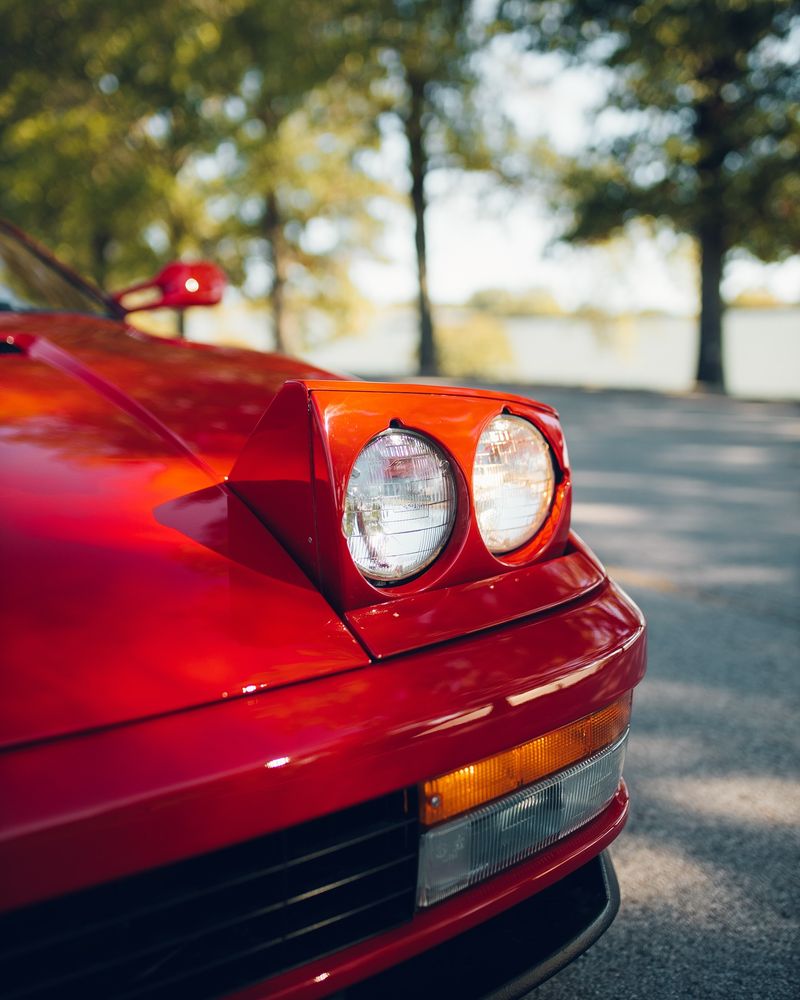
By day, the Testarossa’s sleek nose looked impossibly low and aerodynamic.
By night, those rectangular eyes flipped up to illuminate the road ahead, transforming the car’s expression from sleeping beast to alert predator.
Modern safety regulations got rid of pop-up headlights, making them a delightful relic of automotive history.
The Testarossa’s version integrated perfectly with its wedge-shaped design, maintaining clean lines during daylight cruising while providing adequate illumination after dark.
6. Wedge of Wonder: The Distinctive Shape

Slicing through air like a crimson arrow, the Testarossa’s wedge profile perfectly embodied 1980s supercar design philosophy.
From its knife-edge nose to its high, squared-off tail, every line served both style and aerodynamic function.
Designer Leonardo Fioravanti created a shape that looked fast even standing still.
The low, aggressive stance made everything else on the road seem pedestrian by comparison. Four decades later, the silhouette remains instantly recognizable—the hallmark of truly timeless design.
7. Rosso Corsa: The Signature Red
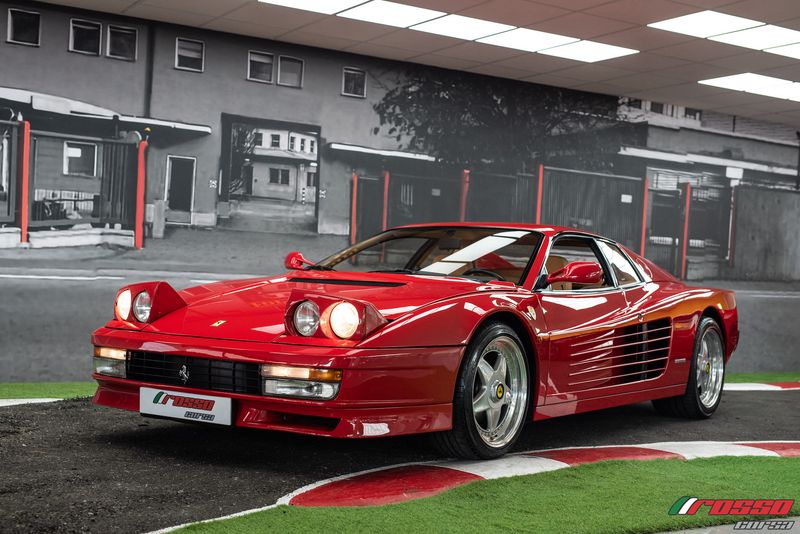
While Testarossas came in various colors, nothing beats the classic Rosso Corsa red that gave the model its name.
“Testarossa” literally means “red head” in Italian, originally referring to the red valve covers on Ferrari racing engines.
This particular shade of Ferrari red became so iconic that many people assume all Testarossas came in this color.
The vibrant hue perfectly complemented the car’s dramatic lines, creating a visual punch that screamed “Look at me!” without saying a word.
8. Rolling Art: Five-Bolt Wheels

Ferrari bucked convention with the Testarossa’s distinctive five-bolt wheels when most exotic cars used center-lock hubs.
These single-piece alloys featured an elegant star pattern that became a design hallmark of the model.
Measuring 16 inches in diameter (huge for the era), these wheels wore different width tires front and rear to handle the car’s unique weight distribution.
The rears were massive 10-inch wide monsters that created the car’s planted stance and helped put all that horsepower to the pavement.
9. Sumptuous Cockpit: The Leather Interior
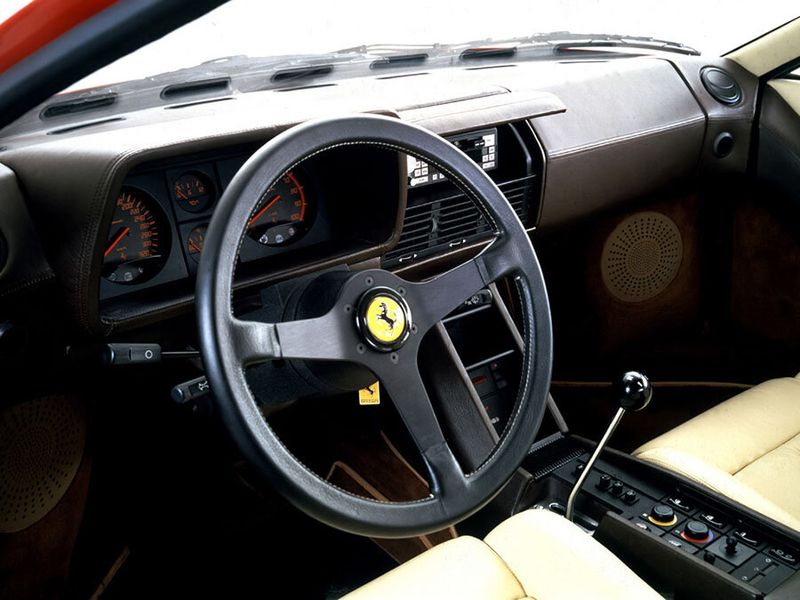
Stepping inside a Testarossa revealed a cabin swathed in the finest hand-stitched leather imaginable.
Every surface—from the dashboard to the center console to the headliner—wore supple hides in contrasting colors that appealed to the most discerning buyers.
The smell alone was intoxicating. Unlike modern cars with their synthetic materials, the Testarossa’s interior developed a rich patina over time, aging like fine wine.
Those distinctive side bolsters on the seats held drivers firmly in place during spirited cornering while providing long-distance comfort.
10. Cool Under Pressure: Rear-Mounted Radiators
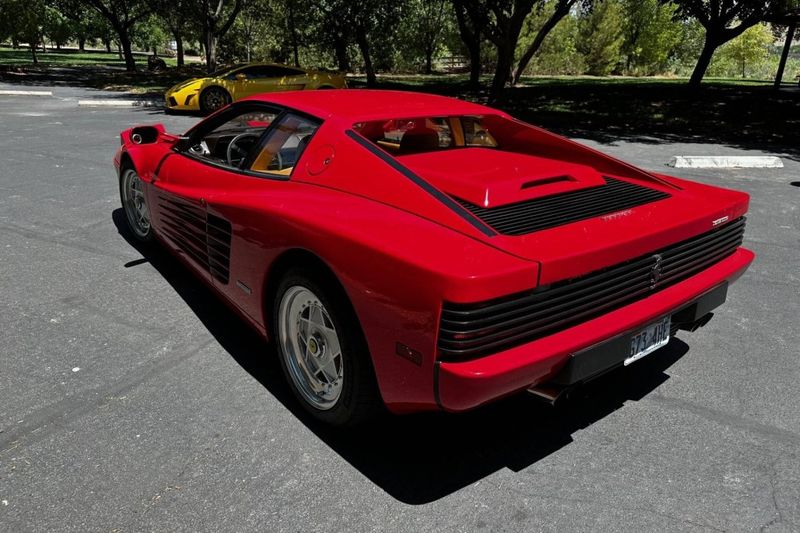
Ferrari engineers made a revolutionary decision to move the radiators from the front to the sides of the car, just behind those famous strakes.
This solved the overheating problems that plagued its predecessor, the 512 BB, while creating the car’s most distinctive visual feature.
This unconventional cooling system improved cabin comfort by reducing heat soak and allowed for that impossibly low front end.
The side-mounted radiators also balanced weight distribution perfectly, contributing to the car’s stellar handling characteristics.
11. Autobahn Annihilator: High-Speed Capability
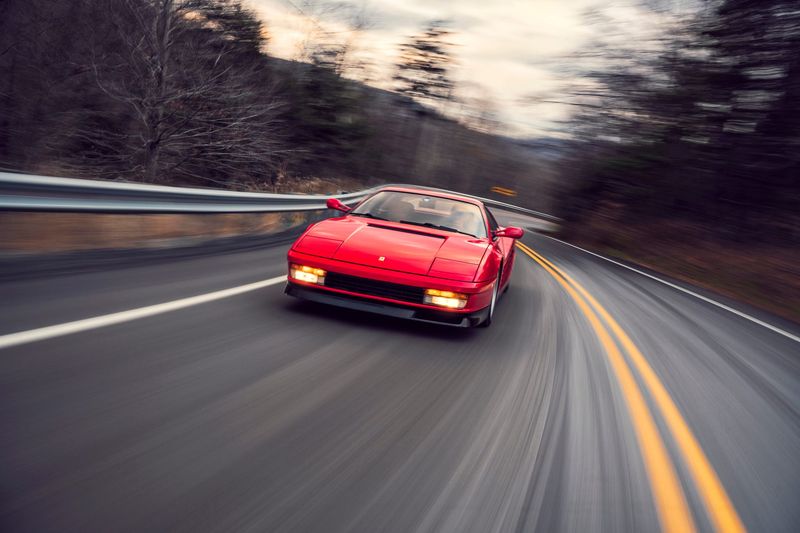
With a top speed approaching 180 mph, the Testarossa wasn’t just show—it delivered serious go.
Zero to 60 happened in just 5.2 seconds, blistering performance for a road car of its era and still impressive today.
More importantly, the car was engineered for high-speed stability that few contemporaries could match. German owners regularly cruised the autobahn at speeds that would terrify lesser vehicles.
The Testarossa’s aerodynamic shape kept it planted at velocities where many supercars became twitchy and unpredictable.
12. Miami Vice Megastar: 1980s Cultural Icon
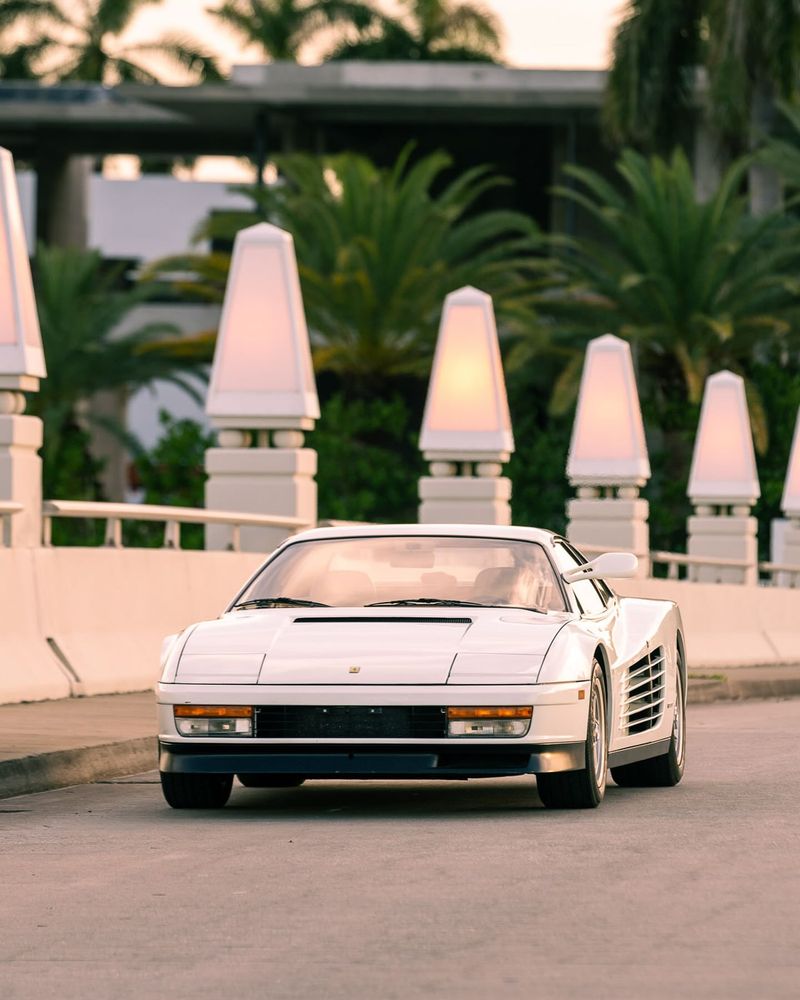
When Detective Sonny Crockett traded his Daytona Spyder for a white Testarossa on “Miami Vice,” the car’s celebrity status was cemented forever.
That famous scene of the white Ferrari cruising through neon-lit streets became the defining automotive image of the decade.
Beyond television, the Testarossa graced countless bedroom posters, appeared in video games, and became shorthand for success during the economic boom of the 1980s.
No other car so perfectly encapsulated the excess and aspiration of the era.
13. Pininfarina’s Masterpiece: Design Legacy
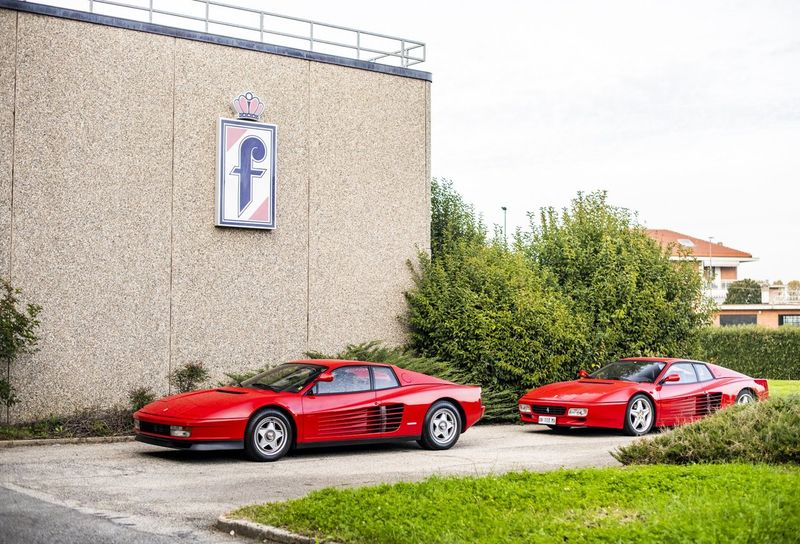
The legendary Italian design house Pininfarina created automotive magic with the Testarossa.
Chief designer Leonardo Fioravanti took the challenge of solving the 512 BB’s cooling issues and transformed it into one of history’s most visually striking vehicles.
Every element served both form and function—the wide rear end accommodated the engine, the side strakes fed the radiators, and the wedge profile sliced through air.
The result wasn’t just a car but a rolling sculpture that influenced automotive design for decades to come.
